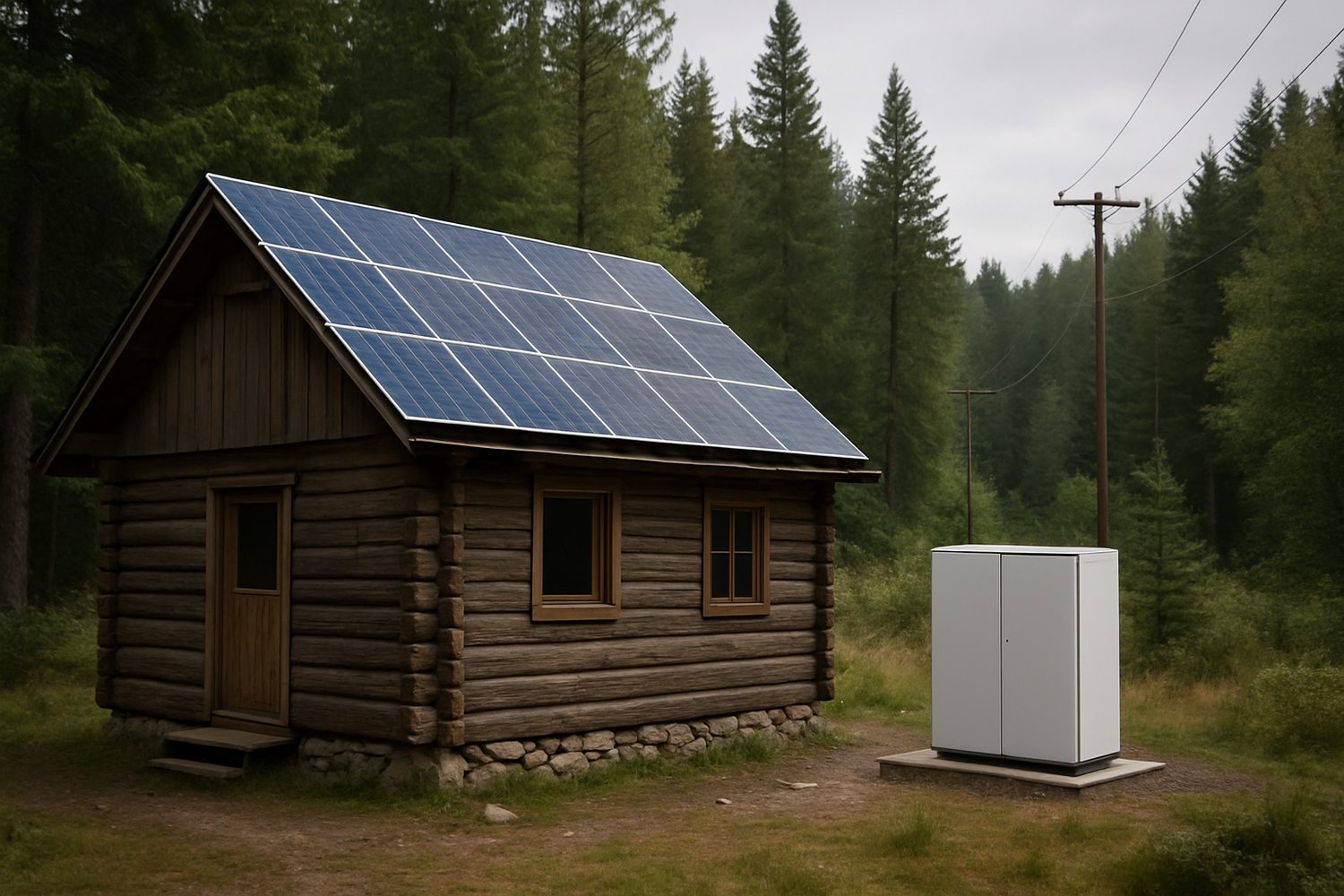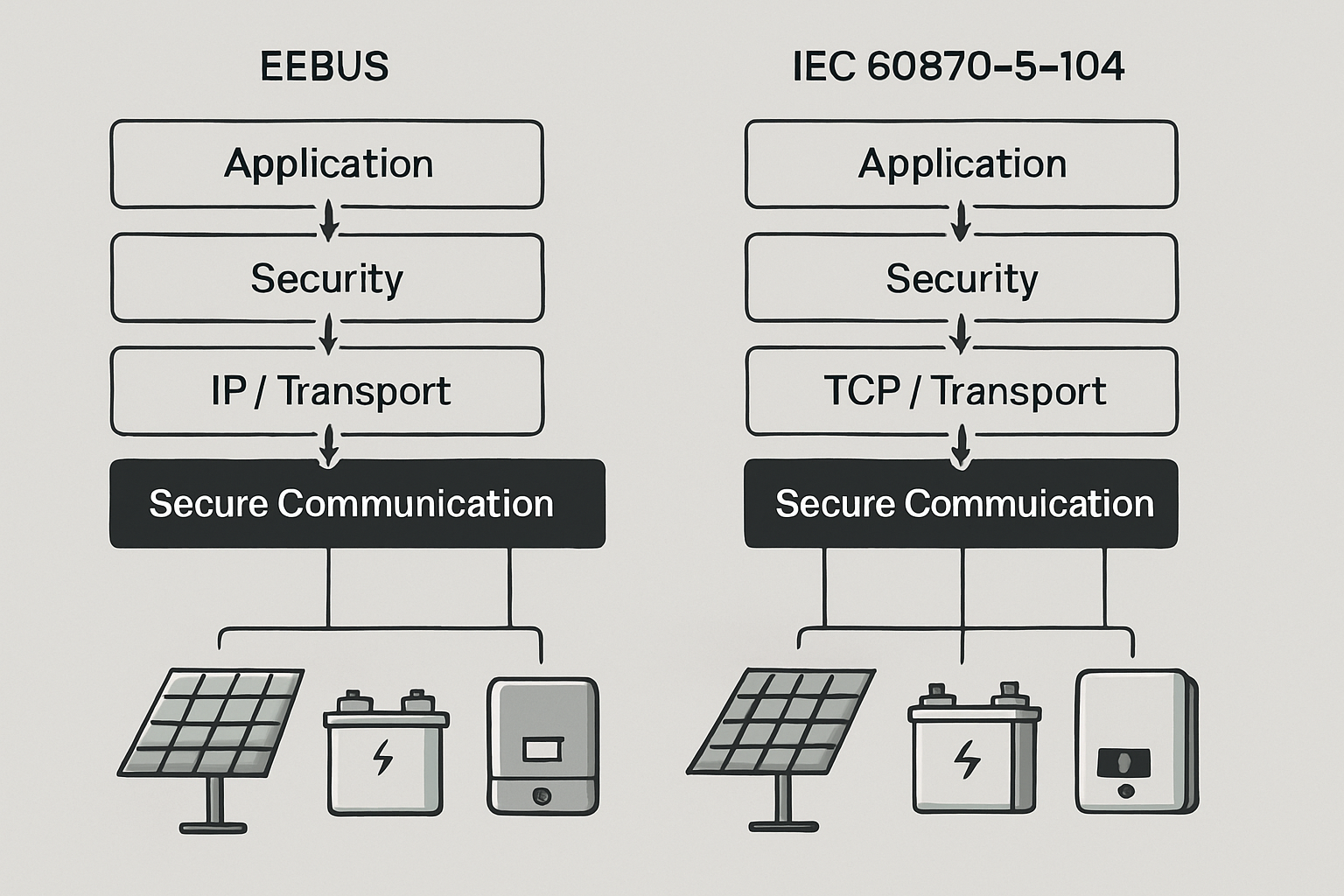Remote locations face unique energy challenges. Weak grid connections, frequent outages, and limited infrastructure make traditional power sources unreliable. This creates critical problems for cabins seeking weekend comfort, farms requiring consistent irrigation power, and clinics needing life-saving equipment operational 24/7.
Proper sizing becomes essential in these scenarios. Unlike grid-tied systems where you can draw additional power when needed, off-grid installations must provide complete energy independence. One miscalculation means equipment failures, spoiled crops, or compromised medical care.

Understanding Load Profiles Across Different Applications
Each application type presents distinct energy consumption patterns that directly impact sizing requirements. Getting these calculations right from the start prevents costly oversizing or dangerous undersizing.
Cabin Energy Demands: Seasonal Variations
Weekend cabins typically consume 15-25 kWh daily during peak usage periods. Summer loads center around refrigeration (3-4 kWh), lighting (2-3 kWh), and water pumping (4-6 kWh). Winter demands shift dramatically with heating requirements potentially doubling total consumption.
Critical insight: Many cabin owners underestimate winter heating loads. Electric space heaters can draw 1,500W continuously, adding 36 kWh daily to your baseline consumption. This seasonal spike requires careful battery capacity planning.
Farm Operations: Irrigation and Equipment Loads
Agricultural operations present complex load profiles combining steady-state irrigation with intermittent equipment use. A typical 5-acre farm irrigation system draws 2,000-3,000W during 6-8 hour daily cycles, consuming 12-24 kWh just for water management.
Additional farm loads include:
- Grain handling equipment: 5-15 kWh per processing cycle
- Livestock water systems: 2-4 kWh daily continuous
- Feed preparation: 3-8 kWh per batch operation
- Emergency backup for milking systems: 8-12 kWh per session
According to IRENA's grid integration research, agricultural microgrids benefit significantly from storage systems that can handle both predictable irrigation cycles and unpredictable equipment startup surges.
Clinic Power Requirements: Life-Critical Loads
Medical facilities cannot accept power interruptions. Essential equipment includes refrigeration for vaccines (2-3 kWh daily), diagnostic equipment (4-6 kWh), and lighting for procedures (3-5 kWh). Emergency backup must support life-critical functions for minimum 72 hours.
Clinic sizing requires redundancy planning. Primary systems handle normal operations while backup capacity ensures continuous power during extended cloudy periods or equipment failures.
Site Assessment and Resource Evaluation
Accurate resource assessment determines whether your proposed system can actually deliver required power. This step eliminates guesswork and prevents expensive redesigns.
Solar Resource Analysis
Peak sun hours vary dramatically by location and season. Northern regions might receive 2.5-3.5 peak sun hours in winter versus 6-7 hours in summer. Southern locations maintain more consistent 4-6 hour ranges year-round.
Use NREL's PVWatts calculator for precise irradiance data specific to your coordinates. Input actual tilt angles and shading factors rather than generic assumptions. A 20% shading factor during peak hours can reduce total daily generation by 35-40%.
Grid Connection Quality Assessment
Weak-grid areas require hybrid system considerations. Measure actual grid availability over several months to determine backup requirements. Many "grid-connected" rural areas experience 20-40% downtime during severe weather seasons.
Key measurements include:
- Voltage stability: Fluctuations beyond ±10% indicate weak infrastructure
- Frequency variations: Deviations exceeding ±0.5 Hz suggest grid instability
- Outage duration patterns: Track both frequency and duration of interruptions
Component Sizing Calculations
Systematic calculations ensure components work together efficiently. Each element must be sized to support the others while maintaining safety margins for unexpected conditions.
Solar Array Sizing Methodology
Start with daily energy consumption and apply derating factors for real-world conditions. Base calculation: Required Array Size (kW) = Daily Load (kWh) ÷ Peak Sun Hours ÷ System Efficiency.
System efficiency typically ranges 75-85% accounting for:
- Inverter losses: 5-8%
- Wiring losses: 2-3%
- Temperature derating: 8-12%
- Soiling and aging: 3-5%
Example: A 30 kWh daily load in a 5 peak sun hour location requires: 30 ÷ 5 ÷ 0.8 = 7.5 kW minimum array size. Add 20-25% safety margin for weather variability, resulting in 9-9.5 kW recommended capacity.
Battery Storage Calculations
Battery sizing must account for autonomy days, depth of discharge limits, and temperature effects. Formula: Battery Capacity (kWh) = Daily Load × Autonomy Days ÷ Usable Capacity Percentage.
LiFePO4 batteries typically provide 90-95% usable capacity versus 50% for lead-acid systems. For a 30 kWh daily load with 3 autonomy days: LiFePO4 requires 30 × 3 ÷ 0.9 = 100 kWh nominal capacity.
| Application Type | Recommended Autonomy Days | Battery Chemistry | Typical Capacity Range |
|---|---|---|---|
| Weekend Cabin | 2-3 days | LiFePO4 | 40-80 kWh |
| Farm Operations | 3-4 days | LiFePO4 | 80-200 kWh |
| Medical Clinic | 5-7 days | LiFePO4 + Backup | 150-400 kWh |
Inverter Selection Criteria
Inverter capacity must handle peak loads plus startup surges. Motor-driven equipment like water pumps require 3-5x running current for startup. Size inverters for maximum simultaneous load plus largest motor startup current.
For weak-grid applications, consider hybrid inverters with grid-forming capabilities. These systems can operate independently when grid power fails while providing seamless transitions during normal operations.
Integration Strategies for Weak-Grid Environments
Successful weak-grid installations require careful integration planning. Systems must handle grid instability while maximizing renewable energy utilization.
Hybrid System Architecture
Optimal weak-grid systems combine solar generation, battery storage, and selective grid connection. Smart inverters automatically switch between grid-tie and off-grid modes based on grid quality measurements.
According to IRENA's electricity storage framework, properly configured storage systems can provide grid stabilization services while ensuring local energy security.
Load Management Integration
Implement automated load management to optimize energy usage patterns. Program non-critical loads like water heating or equipment charging to operate during peak solar production hours. This reduces battery cycling and extends system lifespan.
Smart controllers can automatically shed non-essential loads during low battery conditions, prioritizing critical functions like medical equipment or livestock water systems.
Performance Optimization and Monitoring
Ongoing monitoring ensures systems perform as designed and identifies issues before they cause failures. Remote monitoring becomes especially important for installations in difficult-to-access locations.
Key Performance Indicators
Track these metrics to verify proper system operation:
- Daily energy production vs. consumption ratios
- Battery state of charge patterns and cycling depth
- System efficiency measurements across seasonal variations
- Grid availability statistics and power quality measurements
Monthly performance reviews help identify trends before they become problems. Declining solar production might indicate soiling issues, while increasing battery cycling suggests load growth or component aging.
Maintenance Scheduling
Remote installations require proactive maintenance planning. Schedule quarterly inspections during favorable weather conditions. Stock critical spare parts locally to minimize downtime during failures.
Component-specific maintenance includes:
- Solar panel cleaning and connection inspection
- Battery voltage balancing and thermal monitoring
- Inverter cooling system maintenance and firmware updates
- Grounding system integrity verification
Cost-Benefit Analysis and ROI Considerations
Proper financial analysis justifies investment decisions and guides system sizing choices. Weak-grid applications often show faster payback periods due to poor utility service quality and high backup generator operating costs.
Total Cost of Ownership
Calculate 20-year lifecycle costs including initial investment, maintenance, component replacements, and fuel savings. LiFePO4 battery systems typically show 15-20% lower total ownership costs despite higher upfront investment.
Factor in avoided costs from power outages. For farms, a single irrigation failure can cost thousands in crop losses. Medical clinics face even higher consequences from power interruptions affecting patient care.
Based on field experience, properly sized renewable energy systems in weak-grid areas typically achieve 8-12 year payback periods when accounting for avoided generator fuel costs and improved service reliability.





Leave a comment
All comments are moderated before being published.
This site is protected by hCaptcha and the hCaptcha Privacy Policy and Terms of Service apply.